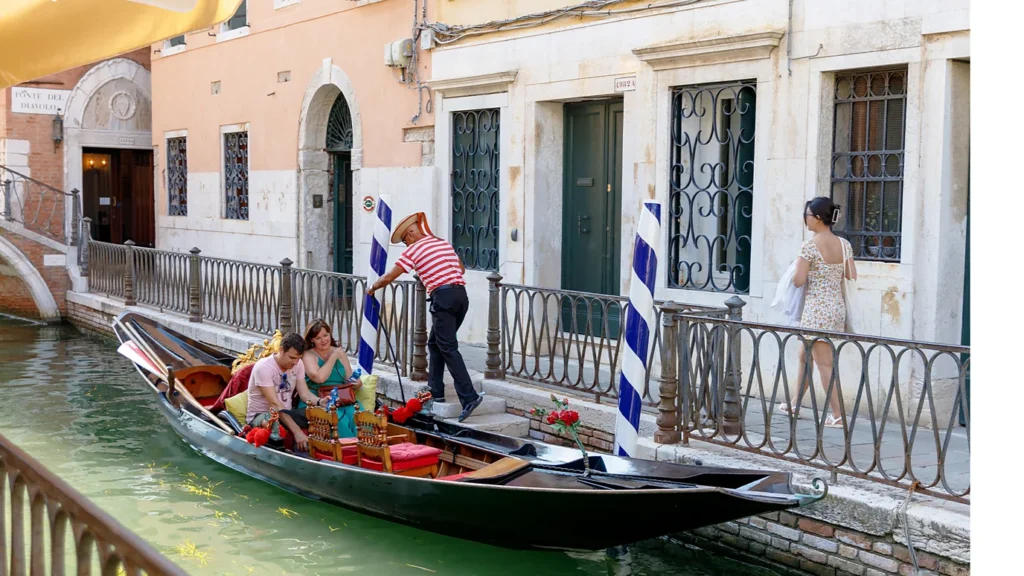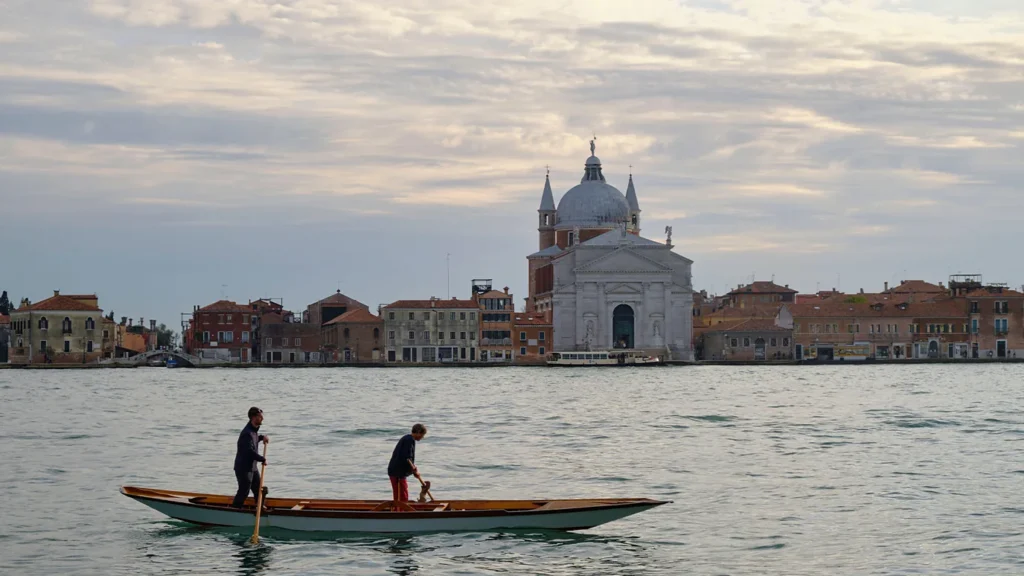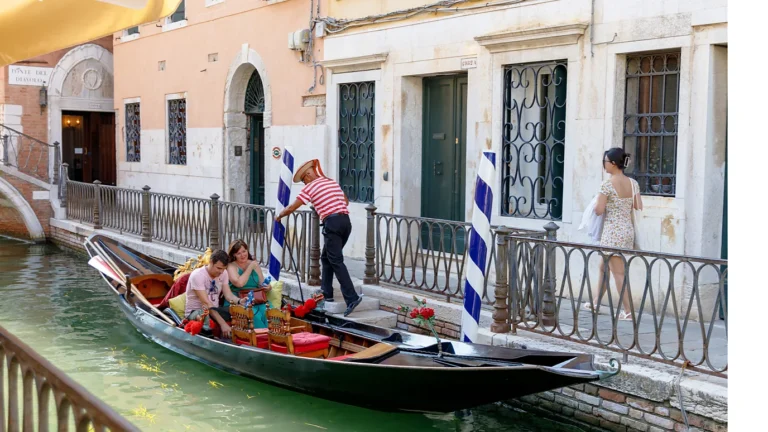
Smaller and less ornate than gondolas, sandoli are traditional Venetian boats that have been part of the city’s history for centuries. These flat-bottomed rowing boats were once used by everyday Venetians for fishing, transporting goods, and navigating shallow lagoon waters. Today, they offer a unique way for visitors to explore quieter, lesser-known parts of Venice where gondolas cannot go.
At 09:00 on a typical morning in Venice, the canals begin to stir with activity. Among them is sandolo rower Luca Padoan, who proudly explains to curious tourists that the sandolo predates the iconic gondola. While gondolas are better known, sandoli have been documented as far back as 1292. Historically, they were multifunctional vessels, serving roles from fishing and racing to ferrying people and building materials. Sandoli are shorter and wider than gondolas, making them more stable for heavier loads, and their symmetrical design allows rowers to use either one or two oars. This rowing style, known as voga alla vaesana, was once crucial for fish farming in the Venetian lagoon.
Despite their historical significance, sandoli are now rare. Only 20 sandolisti (sandolo rowers) remain in Venice, compared to 433 gondoliers. The decline began as gondolas, with their asymmetrical design and ease of maneuverability, became more popular. Gondolas dominate Venice’s waterways today, while sandoli are preserved for their cultural and historical value.

Visitors can ride sandoli from nine stations in the city. The experience costs the same as a gondola ride—€90 for 30 minutes during the day and €110 for 35 minutes at night—but offers a more intimate exploration of Venice. Sandoli can access narrow canals and hidden landmarks like the Jewish Ghetto, Ponte dei Greci, and Ponte dell’Olio, areas often inaccessible to gondolas.
For many sandolisti, the tradition runs in the family. Luca Padoan, for instance, began rowing with his grandfather at the age of seven. Today, he maintains the family sandolo with the help of his mother, who repairs its cushions. Similarly, Valentino Scarpa, another sandolista, refined his craft after returning to Venice from university.
However, the sandolo trade is now open to newcomers without family ties to the tradition. Aspiring sandolisti must pass navigation, rowing, and swimming tests to obtain a professional license. For some, such as Mariano Pozzobon, a former taxi driver, becoming a sandolista represents both a career shift and a deep connection to Venetian culture.
The sandolo offers tourists an authentic perspective on Venice. As sandolista Livio Bon explains, the experience is designed to immerse passengers in the city’s beauty, from the sound of the canals to the sway of the boat. It is not merely a job but a passion that preserves Venice’s history.
Riding in a sandolo is more than sightseeing—it’s a journey into Venice’s soul, revealing its lesser-seen corners and centuries-old traditions.




